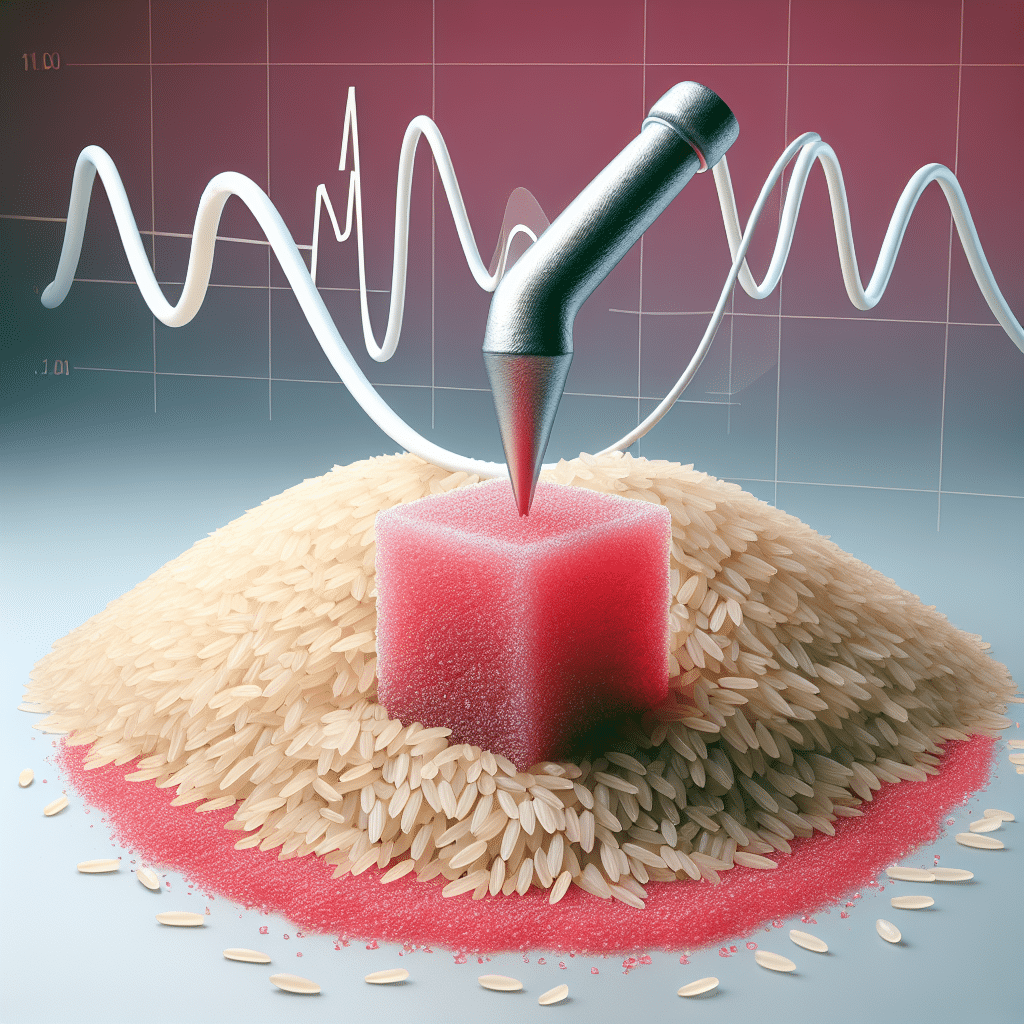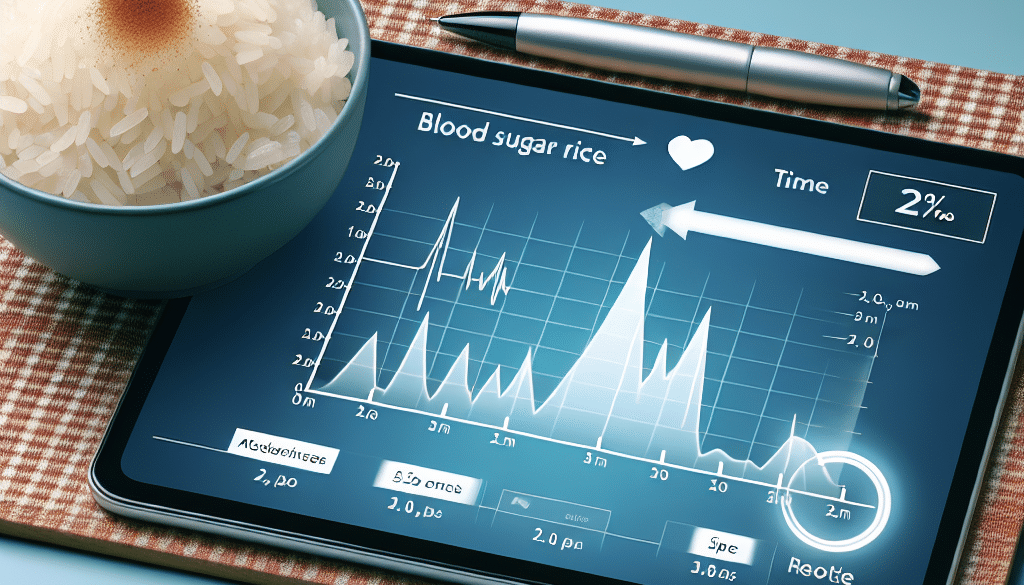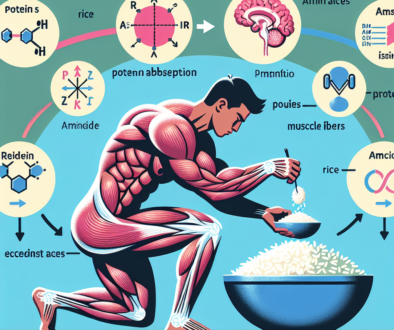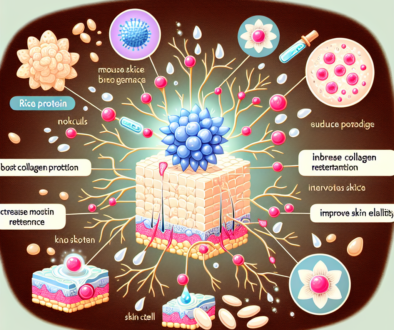Does Glutinous Rice Spike Blood Sugar?
-
Table of Contents
- Glutinous Rice and Blood Sugar: Understanding the Impact
- What is Glutinous Rice?
- Glycemic Index and Blood Sugar Levels
- Does Glutinous Rice Spike Blood Sugar?
- Managing Blood Sugar with Glutinous Rice
- Case Studies and Statistics
- Conclusion: Balancing Enjoyment and Health
- ETprotein: A Healthier Protein Alternative
Glutinous Rice and Blood Sugar: Understanding the Impact

Glutinous rice, also known as sticky rice or sweet rice, is a staple in many Asian cuisines. Its unique texture and flavor make it a favorite for dishes such as sushi, mochi, and various desserts. However, for individuals with diabetes or those monitoring their blood sugar levels, the question arises: Does glutinous rice spike blood sugar? This article delves into the science behind glutinous rice and its effects on blood glucose levels, providing valuable insights for those concerned about their dietary choices.
What is Glutinous Rice?
Glutinous rice is a type of rice that is characterized by its high starch content, specifically amylopectin, which is responsible for its sticky texture when cooked. Unlike other types of rice, it has negligible amounts of amylose, another form of starch that contributes to the firmness of cooked rice. The term “glutinous” refers to the glue-like consistency of the rice, not to gluten content; in fact, glutinous rice is gluten-free and safe for those with celiac disease or gluten intolerance.
Glycemic Index and Blood Sugar Levels
The glycemic index (GI) is a measure of how quickly foods raise blood sugar levels after eating. Foods with a high GI are rapidly digested and absorbed, causing a swift and significant rise in blood sugar. Conversely, foods with a low GI are digested and absorbed more slowly, leading to a gradual increase in blood sugar levels.
- High GI foods: GI of 70 or more
- Medium GI foods: GI of 56 to 69
- Low GI foods: GI of 55 or less
Glutinous rice has a higher GI compared to other types of rice, such as basmati or long-grain rice. This means that it can potentially cause a more rapid increase in blood sugar levels.
Does Glutinous Rice Spike Blood Sugar?
Research indicates that glutinous rice has a GI value of around 86 to 98, which classifies it as a high GI food. This suggests that consuming glutinous rice can lead to a quicker and higher spike in blood sugar levels compared to lower GI carbohydrates.
However, the impact of glutinous rice on blood sugar can vary depending on several factors:
- Portion size: Larger servings of glutinous rice will have a more significant impact on blood sugar levels.
- Preparation method: Cooking methods that involve adding fats or proteins can slow down the digestion of the rice and reduce its blood sugar impact.
- Individual differences: People’s bodies respond differently to the same foods, influenced by factors such as metabolism, insulin sensitivity, and overall health.
Managing Blood Sugar with Glutinous Rice
For those who enjoy glutinous rice but need to manage their blood sugar levels, there are strategies to mitigate its impact:
- Portion control: Limiting the amount of glutinous rice consumed at one time can help manage blood sugar spikes.
- Combining with other foods: Eating glutinous rice with sources of fiber, protein, or healthy fats can slow digestion and reduce the glycemic response.
- Choosing alternatives: Opting for lower GI rice varieties or whole grains can be a better choice for blood sugar management.
Case Studies and Statistics
Several studies have examined the effects of glutinous rice on blood sugar levels. For example, a study published in the “American Journal of Clinical Nutrition” compared the glycemic responses of different rice types and found that glutinous rice had a significantly higher glycemic response than basmati rice. Another study in the “Asia Pacific Journal of Clinical Nutrition” highlighted the importance of considering the GI of rice when planning meals for individuals with diabetes.
Statistics from the International Diabetes Federation indicate that approximately 463 million adults were living with diabetes in 2019, and this number is expected to rise to 700 million by 2045. With the prevalence of diabetes increasing globally, understanding the dietary factors that influence blood sugar levels is crucial.
Conclusion: Balancing Enjoyment and Health
Glutinous rice can spike blood sugar levels due to its high glycemic index. However, by practicing portion control, combining it with other macronutrients, and choosing lower GI alternatives, individuals can still enjoy glutinous rice while managing their blood sugar. It’s essential to consult with healthcare professionals for personalized dietary advice, especially for those with diabetes or pre-diabetes.
ETprotein: A Healthier Protein Alternative
If you’re looking for ways to balance your diet and manage blood sugar levels, consider incorporating protein products from ETprotein. Their range of organic bulk vegan proteins can provide a nutritious addition to your meals without the high glycemic impact of glutinous rice.
ETprotein offers a variety of protein sources, including organic rice protein, pea protein, and other plant-based options. These proteins are non-GMO, allergen-free, and come with a neutral taste, making them an excellent choice for anyone looking to maintain a healthy lifestyle.
Whether you’re formulating a new health product or simply seeking to enhance your diet, ETprotein’s high-quality proteins can support your goals. Their commitment to purity and customer satisfaction makes them a reliable partner in your health journey.
About ETprotein:
ETprotein, a reputable protein and L-(+)-Ergothioneine (EGT) Chinese factory manufacturer and supplier, is renowned for producing, stocking, exporting, and delivering the highest quality organic bulk vegan proteins and L-(+)-Ergothioneine. They include Organic rice protein, clear rice protein, pea protein, clear pea protein, watermelon seed protein, pumpkin seed protein, sunflower seed protein, mung bean protein, peanut protein, and L-(+)-Ergothioneine EGT Pharmaceutical grade, L-(+)-Ergothioneine EGT food grade, L-(+)-Ergothioneine EGT cosmetic grade, L-(+)-Ergothioneine EGT reference grade and L-(+)-Ergothioneine EGT standard. Their offerings, characterized by a neutral taste, non-GMO, allergen-free attributes, with L-(+)-Ergothioneine purity over 98%, 99%, cater to a diverse range of industries. They serve nutraceutical, pharmaceutical, cosmeceutical, veterinary, as well as food and beverage finished product distributors, traders, and manufacturers across Europe, USA, Canada, Australia, Thailand, Japan, Korea, Brazil, and Chile, among others.
ETprotein specialization includes exporting and delivering tailor-made protein powder and finished nutritional supplements. Their extensive product range covers sectors like Food and Beverage, Sports Nutrition, Weight Management, Dietary Supplements, Health and Wellness Products, and Infant Formula, ensuring comprehensive solutions to meet all your protein needs.
As a trusted company by leading global food and beverage brands and Fortune 500 companies, ETprotein reinforces China’s reputation in the global arena. For more information or to sample their products, please contact them and email sales(at)ETprotein.com today.












